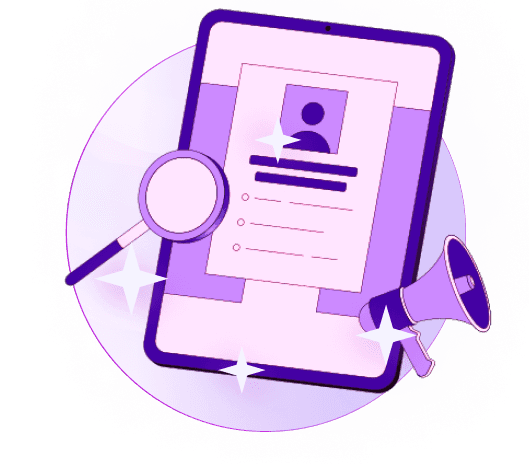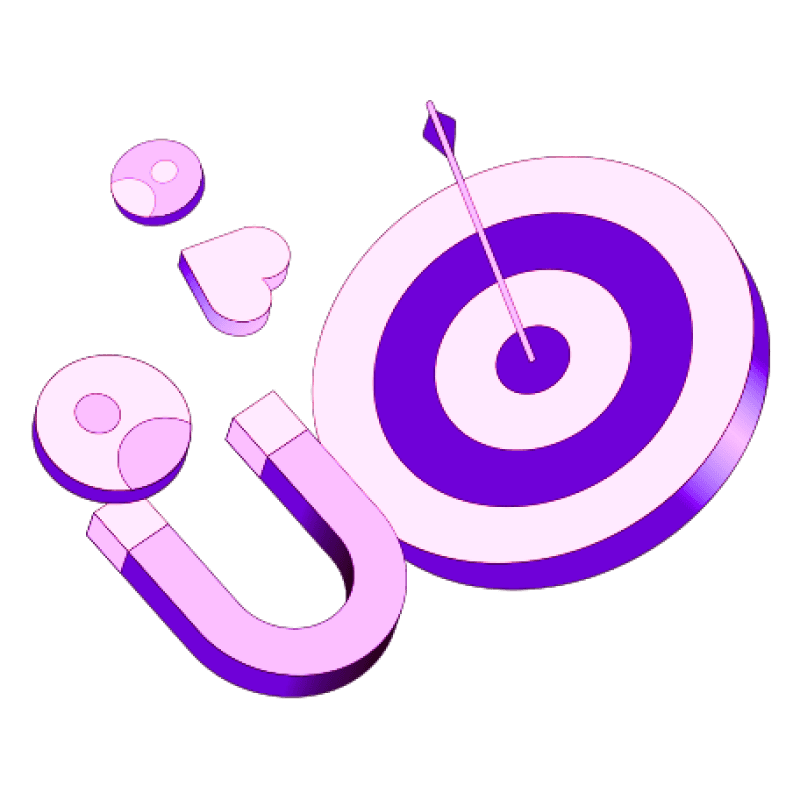Blogs
Articles

How to Create Personalized Landing Pages That Convert Lookalike Audiences
Did you know that tailored product recommendations can boost website conversion rates by up to 49%?
Personalized landing pages convert visitors into leads or customers better than generic ones in digital marketing. Companies that work on improving their conversion rates see their overall revenue increase by 22% on average. Creating tailored experiences for different audience segments has become crucial for modern marketing campaigns.
The advantages go beyond immediate conversions. Your cost-per-acquisition drops by a lot as more visitors convert. You get more value from every dollar spent. It also builds trust, involves customers, and creates lasting loyalty.
Let's take a closer look at how to create personalized landing pages that speak directly to lookalike audiences. We'll cover everything you need to know about crafting high-converting landing pages - from understanding audience intent to implementing dynamic content. Small improvements can make a big impact. Studies show a one-second delay in load time can reduce conversions by up to 7%.
Ready to boost your conversion rates with personalization? Let's get started!
Understanding Lookalike Audiences and Their Intent
Lookalike audiences stand out as one of the quickest ways to reach new customers who share key traits with your existing customer base. Your marketing efforts become focused on people who show similar behaviors and interests to your current customers, instead of using broad targeting that casts a wide net.
A lookalike audience builds itself through analysis of your source audience's traits and patterns usually your existing customers or active users to find new people with matching characteristics. The system uses sophisticated algorithms and machine learning to spot common traits, moving beyond basic demographic assumptions.
Data analysis drives the creation process, and your results depend on your source data's quality. The best performance comes from having at least 100 people in your custom audience. These algorithms look at various data points such as purchasing habits, content interactions, interests, and browsing patterns.
Lookalike audiences prove valuable because of their intent match-up. These prospects show behaviors that suggest interest in your offering, unlike cold traffic. This targeting helps you connect with potential customers who match your ideal customer profile and show higher conversion potential.
The numbers tell the story of lookalike audiences' success. They usually bring a higher return on investment because your resources target people who are ready to get involved with your brand. Companies often see lower customer acquisition costs and better ad spend returns when they use this strategy properly.
Platform settings let you adjust audience similarity through percentages. A 1% lookalike audience targets only the closest matching top 1% of users, which brings higher quality leads but reaches fewer people. A 10% audience reaches more people but matches less precisely.
Your landing pages need to reflect this difference in intent to convert well. These audiences know more than cold traffic but less than retargeted visitors about your brand.
What are lookalike audiences in Facebook and Google Ads?
Facebook and Google Ads have transformed lookalike audiences into powerful targeting tools that help advertisers discover potential customers who resemble their existing ones. Facebook's lookalike audiences use sophisticated algorithms to analyze your current customers' demographics, interests, and behaviors. Google's lookalike segments work like in Facebook and use your first-party data to spot common characteristics among potential customers.
These platforms need specific minimum audience sizes to work well. Facebook suggests having 1,000-5,000 people in your source audience, and Google requires at least 1,000 active matched users. Your percentage settings control how the new audience matches your source. Small percentages around 1% create closer matches with higher quality leads. Larger settings between 5-10% give you broader reach.
Why personalization matters for lookalike segments
Personalization is a vital part of lookalike audiences because they share traits with your best customers. Landing pages tailored to these specific segments tap into their existing behavioral patterns. The sort of thing i love about lookalike audiences is that they deliver a 13% lower cost per acquisition compared to interest-based targeting. This makes individual-specific approaches more successful.
How intent differs from cold or retargeted traffic
Lookalike audiences sit right in the middle of the intent spectrum. They show similar behaviors to your customers, unlike completely cold traffic that has no prior connection to your brand. But they haven't participated with you directly like retargeted visitors have.
This makes them perfect targets for personalized messaging that speaks to their interests without assuming they know your brand.
Segmenting and Mapping Audiences to Personalized Experiences
A successful personalized landing page strategy needs good segmentation at its core. You can create targeted experiences by splitting your lookalike audiences into meaningful groups that speak to their specific needs and interests.
Using behavioral and demographic data to segment
Quality data analysis leads to successful segmentation. Market segmentation helps you split your lookalike audience into smaller groups with shared traits. These include:
Demographics: Age, gender, income, location
Psychographics: Values, interests, attitudes
Behavior: Purchase history, brand interactions
Needs: Problems they're trying to solve
Google Analytics data shows which segments respond best to specific content. Customer interviews also give valuable insights that numbers alone might miss.
Matching landing page goals with audience intent
User intent plays a vital role because customers clicking your ads have clear expectations: they want relevant content, quick solutions, and obvious value. Here's how to match this intent:
Create dedicated landing pages for different search intents or stages in the buyer's experience. The language between your ad and landing page should flow naturally, using similar terms in headlines and content.
Creating audience-specific value propositions
Your value proposition should be clear, compelling, and focused on customers. Visitors should see it first since it's your main reason why prospects should choose you.
A strong value proposition:
Shows how your product fixes customers' problems
Lists specific, measurable benefits
Explains why customers should pick you over competitors
Testing your value proposition with target customers helps you know if it's clear, relevant, unique, and if they actually want what you offer.
Building Dynamic Personalized Landing Pages That Convert
Landing pages need customized content that appeals to different visitor groups. Here's how you can build pages that convert your lookalike audiences better.
Personalizing headlines and CTAs for each segment
Your headline makes the first impression, so customize it to connect instantly with visitors. Dynamic text replacement helps arrange your landing page with keywords that your customers search for. Custom CTAs can boost conversions by up to 202% compared to generic ones. Action-driven language that matches visitor intent works well, whether they want to learn more or are ready to convert.
Using dynamic content blocks and smart visuals
Visual elements affect engagement by a lot—80% of viewers focus more on content with relevant images. Landing pages with videos can increase conversions by 86%. Dynamic content blocks adapt your message based on where visitors are, how they behave, or their demographics.
Persana can help you create smart dynamic content. Their AI-powered solutions automatically customize your landing page elements based on how users behave and what they want.
Examples of personalized landing pages for campaigns
DoggyLoot saw their email click-through rates jump 410% when they segmented their audience using dog ownership data. Netflix keeps things simple with a one-field form that even grandparents can use. HexClad uses smart banners to remind visitors about promotions while keeping them focused on converting.
Tools to create personalized landing pages (e.g., VWO, Unbounce)
Unbounce makes it easy to build custom pages without coding. Their Smart Traffic feature sends visitors to pages that match their device type, location, and timezone. VWO gives you complete testing options and live analytics to track how users interact.
Attributes that describe a good landing page experience
A landing page that works needs one clear value proposition above the fold. The main headline should match the ad clicked. Include social proof, focus on one offer with one main CTA, and use a layout that drives conversions. While average landing pages convert at 2.35%, the best ones reach 5.31% or higher.
Regular A/B testing of different elements helps you optimize based on real user data.
Testing, Optimizing, and Scaling Your Personalization Strategy
Your customized landing pages need constant testing and optimization to succeed. Even the best pages require regular updates to stay effective.
A/B testing dynamic landing pages for PPC
A/B testing helps you find which landing page elements appeal to your lookalike audiences. Here's what you should do while testing PPC landing pages:
Test one variable at a time (headline, CTA, form length, imagery)
Let tests run 2-4 weeks or until you get reliable results
Wait for 95% statistical confidence before making changes
This step-by-step process makes sure data drives your improvements, not assumptions. Proper tracking helps you spot reasons behind high bounce rates and saves your ad spend.
Tracking what is landing page conversion rate
Landing page conversion rate shows how many visitors complete your desired action. Average landing pages convert at 2.35%, while top performers reach 5.31% or higher. Page optimization isn't a straight path—it's an ongoing process that metrics and user behavior data guide.
Using heatmaps and session recordings to learn
Heatmaps show you exactly where visitors click, scroll, and focus their attention through visual data. Session recordings go deeper by capturing your visitor's trip through your site and reveal:
User movements and search patterns
Click behaviors and scroll depth
Places where visitors get frustrated or leave
Persana offers AI-powered tools that analyze these interactions and customize your landing pages based on how users behave.
Scaling successful variants across campaigns
You should spread winning elements across your campaigns after finding them through testing. Each audience segment needs treatment as a unique persona with its own story and needs. This method works well just a 4% boost in conversion rate could lift your profits by 50%.
Conclusion
Personalized landing pages offer a powerful way to turn lookalike audiences into valuable customers. This piece explores how these specialized pages can boost your conversion rates by a lot and stimulate revenue growth. The process needs careful attention to audience segmentation, dynamic content creation, and continuous optimization.
The data makes it clear - personalization works. Lookalike audiences share key traits with your best customers, which makes them perfect candidates to convert when they see tailored messages. Time spent understanding their specific needs and behaviors brings substantial returns.
Real personalization goes deeper than surface-level changes. Successful landing pages do more than swap images or headlines - they address each segment's unique intent signals. The content matches the ad messaging to create a smooth experience that builds trust.
Testing plays a crucial role in the process. Your optimization efforts need a methodical approach. Test one variable at a time, collect enough data, and scale what works. Heatmaps and session recordings are a great way to get insights into how visitors interact with your pages.
Key Takeaways
Personalized landing pages can dramatically improve your marketing ROI by converting lookalike audiences more effectively than generic approaches.
• Lookalike audiences occupy the sweet spot between cold and warm traffic - they share traits with your best customers but need tailored messaging to convert effectively.
• Segment audiences using behavioral and demographic data to create specific value propositions that address each group's unique needs and intent signals.
• Personalize headlines, CTAs, and dynamic content blocks based on visitor characteristics - tailored CTAs can boost conversions by up to 202% compared to generic ones.
• Test systematically with A/B testing and heatmaps to optimize one variable at a time, aiming for 95% statistical confidence before implementing changes.
• Scale successful variants across campaigns by treating different audience segments as distinct personas with their own backstory and specific conversion triggers.

Create Your Free Persana Account Today
Join 5000+ GTM leaders who are using Persana for their outbound needs.
How Persana increases your sales results
One of the most effective ways to ensure sales cycle consistency is by using AI-driven automation. A solution like Persana, and its AI SDR - Nia, helps you streamline significant parts of your sales process, including prospecting, outreach personalization, and follow-up.



